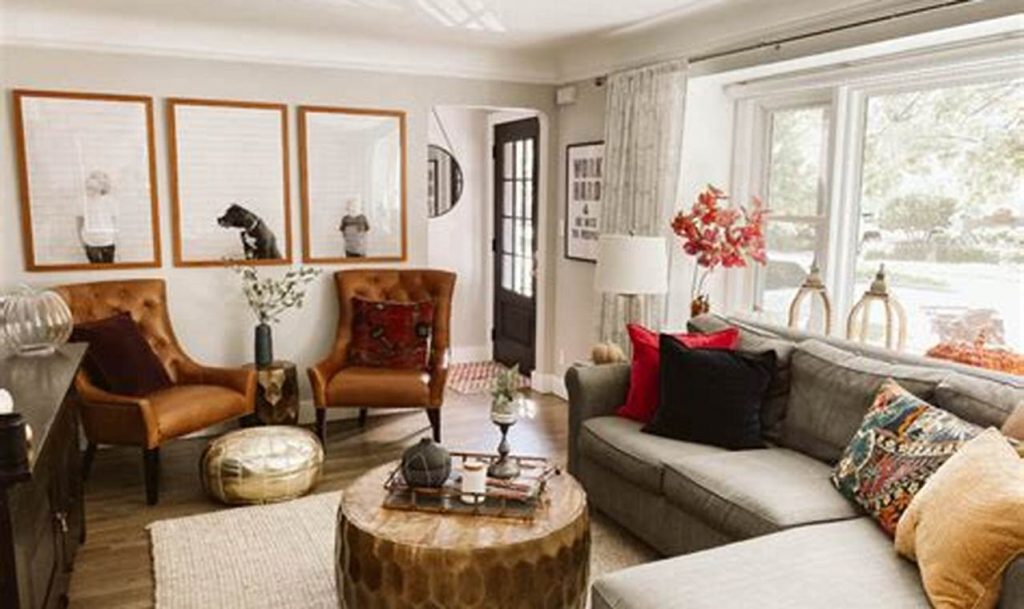
Wondering how to spruce up your home dcor? Look no further than home dcor!
Editor’s Note: home dcor just published today, March 8, 2023, is a comprehensive guide to all things home dcor. Whether you’re looking for tips on how to choose the right furniture or how to accessorize your space, this guide has got you covered.
Our team of experts has done the hard work for you, analyzing the latest trends and digging into the details to put together this home dcor guide. We’ve covered everything from the basics of interior design to the latest trends in furniture and dcor. So whether you’re a first-time homeowner or a seasoned decorator, you’re sure to find something helpful in this guide.
Key Differences or Key Takeaways:
| Home Dcor | |
|---|---|
| Definition | The art of decorating and furnishing a home |
| Purpose | To create a space that is both beautiful and functional |
| Benefits | Can improve your mood, boost your productivity, and make your home more inviting |
Transition to main article topics:
- The basics of interior design
- The latest trends in furniture and dcor
- Tips on how to choose the right furniture
- How to accessorize your space
- Common mistakes to avoid when decorating your home
Home Decor
When it comes to home decor, there are a number of essential aspects to consider. These include:
- Style: The overall aesthetic of your home, from the furniture to the accessories.
- Color: The colors you choose can have a big impact on the mood and feel of your home.
- Furniture: The furniture you choose should be both functional and stylish.
- Accessories: Accessories can add personality and style to your home.
- Lighting: The lighting in your home can make a big difference to the overall atmosphere.
- Layout: The layout of your home should be both functional and aesthetically pleasing.
- Textiles: The textiles you use in your home, such as curtains and rugs, can add texture and interest.
- Plants: Plants can add life and freshness to your home.
- Artwork: Artwork can add personality and style to your home.
- Budget: It’s important to set a budget for your home decor so that you don’t overspend.
These are just a few of the essential aspects to consider when decorating your home. By taking the time to plan your decor, you can create a space that is both beautiful and functional.
Style
Style is one of the most important elements of home decor. It’s what gives your home its unique personality and reflects your taste and preferences. When choosing a style for your home, there are a few things to keep in mind:
- Consider your lifestyle. How do you live in your home? Do you entertain often? Do you have children or pets? Your lifestyle will help you determine which style is most functional and appropriate for your needs.
- Think about your personal taste. What kind of things do you like? What colors and patterns appeal to you? Your personal taste should be the driving force behind your style choices.
- Get inspiration from magazines, websites, and showrooms. There are endless resources available to help you find inspiration for your home decor. Take some time to browse through magazines, websites, and showrooms to get ideas for different styles.
Once you’ve considered these factors, you can start to narrow down your style choices. There are many different styles to choose from, so take your time and find one that you love. Here are a few of the most popular styles:
- Traditional: Traditional style is characterized by its use of classic furniture, fabrics, and accessories. Traditional homes are often warm and inviting, with a timeless appeal.
- Modern: Modern style is characterized by its use of clean lines, simple forms, and neutral colors. Modern homes are often sleek and sophisticated, with a focus on functionality.
- Contemporary: Contemporary style is a mix of traditional and modern styles. Contemporary homes often feature clean lines and neutral colors, but they also incorporate some traditional elements, such as cozy furniture and warm colors.
- Bohemian: Bohemian style is characterized by its use of eclectic furniture, fabrics, and accessories. Bohemian homes are often colorful and eclectic, with a unique and personal touch.
No matter what style you choose, the most important thing is to create a home that you love. Your home should be a reflection of your personality and style, and it should be a place where you feel comfortable and relaxed.
Color
Color is one of the most important elements of home decor. It can be used to create a variety of different moods and atmospheres, from calming and relaxing to energizing and exciting. When choosing colors for your home, it’s important to consider the overall style of your home, the function of each room, and the amount of natural light available.
- Color and Mood: Different colors can evoke different moods. For example, warm colors like red, orange, and yellow can create a feeling of warmth and energy, while cool colors like blue, green, and purple can create a feeling of calmness and relaxation.
- Color and Function: The function of a room should also be considered when choosing colors. For example, bright and cheerful colors are a good choice for kitchens and family rooms, while more subdued colors are a better choice for bedrooms and bathrooms.
- Color and Light: The amount of natural light available in a room can also affect the way colors look. For example, dark colors can make a room feel smaller and more closed in, while light colors can make a room feel larger and more open.
- Color and Style: The overall style of your home should also be considered when choosing colors. For example, traditional homes often feature warm and neutral colors, while modern homes often feature bold and vibrant colors.
By considering all of these factors, you can choose colors that will create the perfect mood and atmosphere for your home. Color is a powerful tool that can be used to transform the look and feel of your space.
Furniture
Furniture is an essential part of any home. It provides a place to sit, relax, eat, and sleep. But furniture is also more than just functional. It can also be a reflection of your personal style and taste. When choosing furniture for your home, it’s important to consider both function and style.
- Functionality: The first thing to consider when choosing furniture is how it will be used. Will it be used for everyday activities, such as sitting, eating, or sleeping? Or will it be used for more occasional purposes, such as entertaining guests or working from home? Once you know how the furniture will be used, you can start to narrow down your choices.
- Style: Once you’ve considered functionality, you can start to think about style. What style of furniture do you prefer? Traditional, modern, contemporary, or something else? There are many different styles of furniture to choose from, so take your time and find a style that you love.
- Quality: Another important factor to consider when choosing furniture is quality. Well-made furniture will last for many years, while poorly made furniture will quickly fall apart. Look for furniture that is made from durable materials and that is well-constructed.
- Comfort: If you’re going to be spending a lot of time in your furniture, it’s important to make sure that it’s comfortable. Sit in the furniture before you buy it to make sure that it’s the right size and shape for you.
By considering all of these factors, you can choose furniture that is both functional and stylish. Furniture is a big investment, so it’s important to take your time and choose pieces that you’ll love for years to come.
Accessories
Accessories are an essential part of any home decor scheme. They can add personality, style, and functionality to any room in your home. Well-chosen accessories can tie a room together and make it feel complete, while poorly chosen accessories can make a room feel cluttered and uninviting.
When choosing accessories for your home, it’s important to consider the overall style of your home, the function of the room, and your personal taste. For example, if you have a traditional home, you might choose classic accessories, such as antique lamps, paintings, and sculptures. If you have a modern home, you might choose more contemporary accessories, such as abstract art, geometric sculptures, and sleek lighting fixtures.
No matter what your style, there are a few key things to keep in mind when choosing accessories:
- Scale: The size of your accessories should be in proportion to the size of the room. Small accessories can get lost in a large room, while large accessories can overwhelm a small room.
- Color: The colors of your accessories should complement the colors of your furniture and walls. You can use accessories to add a pop of color to a neutral room, or you can use them to tone down a room with bold colors.
- Texture: Accessories can add texture to a room. For example, a fluffy rug can add warmth and coziness to a room, while a metallic vase can add a touch of glamour.
- Personal style: Your accessories should reflect your personal style. Don’t be afraid to mix and match different styles to create a unique look for your home.
Accessories are a great way to add personality and style to your home. By following these tips, you can choose accessories that will make your home feel complete and inviting.
| Accessories | Home Decor | |
|---|---|---|
| Definition | Objects that add personality and style to a home | The art of decorating and furnishing a home |
| Purpose | To enhance the appearance and functionality of a home | To create a space that is both beautiful and functional |
| Importance | Accessories can make a home feel more personal and inviting | Home decor can improve your mood, boost your productivity, and make your home more comfortable |
Lighting
Lighting is an essential element of home decor. It can be used to create a variety of different moods and atmospheres, from warm and inviting to bright and energizing. When choosing lighting for your home, it’s important to consider the overall style of your home, the function of each room, and the amount of natural light available.
For example, a warm and inviting atmosphere can be created by using soft, diffused lighting. This type of lighting is perfect for living rooms and bedrooms. Bright and energizing lighting, on the other hand, is perfect for kitchens and home offices. This type of lighting can help to improve focus and productivity.
The amount of natural light available in a room should also be considered when choosing lighting. Rooms with a lot of natural light can benefit from sheer curtains or blinds, which will allow natural light to filter in while still providing privacy. Rooms with little natural light, on the other hand, will need to rely more on artificial lighting. In these rooms, it’s important to use a variety of light sources, such as overhead lighting, table lamps, and floor lamps, to create a well-lit space.
By considering all of these factors, you can choose lighting that will create the perfect mood and atmosphere for your home. Lighting is a powerful tool that can be used to transform the look and feel of your space.
Here are some tips for using lighting to enhance your home decor:
- Use a variety of light sources to create a well-lit space.
- Choose the right type of lighting for the function of each room.
- Consider the amount of natural light available when choosing lighting.
- Use dimmers to control the amount of light in a room.
- Use accent lighting to highlight specific features in a room.
By following these tips, you can use lighting to create a home that is both beautiful and functional.
Layout
The layout of your home is an important part of home decor. A well-planned layout can make your home more functional, comfortable, and stylish. When planning your home’s layout, it’s important to consider the following factors:
- Function: The layout of your home should be functional first and foremost. This means that the rooms should be arranged in a way that makes sense for your lifestyle. For example, if you entertain often, you might want to have your living room and dining room close together. If you have a large family, you might want to have the bedrooms and bathrooms on the same floor.
- Flow: The layout of your home should also flow well. This means that there should be a logical progression from one room to the next. For example, the living room should flow into the dining room, which should flow into the kitchen. This will make it easier to move around your home and will make it more comfortable for guests.
- Aesthetics: The layout of your home should also be aesthetically pleasing. This means that the rooms should be arranged in a way that creates a visually appealing space. For example, you might want to have a large window in the living room to let in natural light. You might also want to have a fireplace in the family room to create a cozy atmosphere.
By considering all of these factors, you can create a home layout that is both functional and stylish. A well-planned layout will make your home more comfortable, inviting, and enjoyable to live in.
Here are some tips for creating a functional and aesthetically pleasing home layout:
- Use a floor plan to plan your layout. This will help you to visualize the space and make sure that the rooms are arranged in a logical way.
- Consider your lifestyle when planning your layout. What activities do you do most often? Where do you spend most of your time? Make sure that your layout accommodates your needs.
- Don’t be afraid to experiment with different layouts. There is no one right way to arrange a home. Try different arrangements until you find one that works for you.
By following these tips, you can create a home layout that is both functional and stylish. A well-planned layout will make your home more comfortable, inviting, and enjoyable to live in.
| Layout | Home Decor | |
|---|---|---|
| Definition | The arrangement of rooms and spaces in a home | The art of decorating and furnishing a home |
| Purpose | To create a functional and aesthetically pleasing space | To create a home that is both beautiful and comfortable |
| Importance | A well-planned layout can make your home more functional, comfortable, and stylish | Home decor can improve your mood, boost your productivity, and make your home more inviting |
Textiles
Textiles play a significant role in home decor, contributing to the overall ambiance and aesthetic appeal of a space. Their ability to add texture and interest stems from their diverse materials, patterns, and colors, which can be used to enhance the visual and tactile experience within a home.
- Texture: Textiles introduce a range of textures into a home, from the soft and plush pile of a rug to the smooth and silky drape of curtains. These textures can create visual interest and depth, making a room feel more inviting and comfortable.
- Pattern: Textiles offer a vast array of patterns, from bold geometric prints to delicate floral motifs. These patterns can be used to create a focal point in a room, add a touch of whimsy, or simply complement the existing decor.
- Color: Textiles come in a wide spectrum of colors, allowing homeowners to infuse their personal style into their living spaces. Whether it’s a vibrant accent rug or a set of neutral-toned curtains, textiles can be used to create a cohesive color scheme or add a pop of color to a room.
- Functionality: Beyond their aesthetic value, textiles also serve practical functions. Curtains can control the amount of light entering a room, while rugs protect floors from wear and tear. By carefully selecting textiles that meet both functional and decorative needs, homeowners can create a space that is both beautiful and practical.
In conclusion, textiles are an integral part of home decor, offering a versatile means to add texture, interest, and functionality to a space. Their diverse materials, patterns, colors, and textures allow homeowners to personalize their living environments and create a home that reflects their unique style and taste.
Plants
In the realm of home decor, plants are not merely decorative elements but essential contributors to a vibrant and inviting living space. Their presence brings a touch of nature indoors, enhancing the overall ambiance and well-being of occupants.
- Aesthetics: Plants add visual interest and color to a room. Their varied shapes, sizes, and textures create a dynamic and aesthetically pleasing environment. From lush ferns to vibrant succulents, plants can complement any decor style, from modern to traditional.
- Air Quality: Plants act as natural air purifiers, removing toxins and releasing oxygen into the air. This can improve indoor air quality, creating a healthier and more comfortable living environment for occupants.
- Stress Reduction: Studies have shown that being around plants can reduce stress and promote relaxation. The act of caring for plants can also be therapeutic, providing a sense of accomplishment and connection to nature.
- Increased Productivity: The presence of plants in a workspace has been linked to increased productivity and creativity. The natural elements they bring into a room can stimulate the senses and create a more positive and inspiring atmosphere.
In conclusion, plants are more than just decorative elements in home decor. They play a multifaceted role in enhancing the aesthetics, air quality, stress levels, and productivity within a living space. By incorporating plants into their home decor, individuals can create a more vibrant, healthy, and inspiring environment.
Artwork
In the realm of home decor, artwork holds a significant place, transcending its role as mere decoration to become an integral part of creating a personalized and stylish living space. Its impact on home decor is multifaceted and profound:
- Expression of Individuality: Artwork provides a unique opportunity for homeowners to express their individuality and creativity. Through the selection of pieces that resonate with their personal taste, style, and interests, they can infuse their homes with a distinct character that reflects their unique personality.
- Enhancement of Ambiance: Artwork has a transformative effect on the ambiance of a room. It can create a desired mood or atmosphere, whether it’s serene, energizing, or contemplative. By carefully curating artwork that aligns with the overall decor scheme, homeowners can establish a cohesive and inviting living space.
- Focal Point Creation: Artwork can serve as a focal point in a room, drawing the eye and creating visual interest. A strategically placed painting, sculpture, or wall hanging can become the centerpiece of a space, commanding attention and setting the tone for the rest of the decor.
- Storytelling Through Art: Artwork often holds stories and evokes emotions. By incorporating pieces that have personal significance or represent meaningful moments in their lives, homeowners can create a home that is not only aesthetically pleasing but also emotionally resonant.
The practical significance of understanding the connection between artwork and home decor lies in its ability to transform ordinary living spaces into personalized havens that reflect the unique style and personality of the occupants. By carefully selecting and arranging artwork, homeowners can create homes that are both beautiful and meaningful, spaces where they can relax, recharge, and express their creativity.
| Artwork | Home Decor | |
|---|---|---|
| Definition | Visual creations that add aesthetic value and expression to a space | The art of decorating and furnishing a home |
| Purpose | To enhance the ambiance, express personality, and create visual interest | To create a comfortable, stylish, and functional living space |
| Importance | Artwork adds personality, style, and emotional resonance to a home | Home decor improves the overall aesthetic appeal and functionality of a space |
Budget
Understanding the connection between budget and home decor is crucial for creating a well-designed and financially responsible living space. A budget serves as a roadmap for your home decor journey, guiding you towards achieving your desired aesthetic without breaking the bank.
Setting a budget empowers you to make informed decisions about your purchases, preventing impulsive spending and ensuring that your home decor aligns with your financial capabilities. It allows you to prioritize essential items, allocate funds wisely, and avoid unnecessary expenses that could strain your finances.
Real-life examples illustrate the significance of budgeting in home decor. Consider two individuals: Sarah, who meticulously planned her budget and stuck to it, and John, who did not. Sarah carefully researched prices, compared products, and took advantage of sales, resulting in a beautifully decorated home that stayed within her financial limits. John, on the other hand, made purchases impulsively, often exceeding his budget and accumulating debt. As a result, his home decor lacked cohesion and left him feeling overwhelmed financially.
The practical significance of understanding the budget-home decor connection lies in its ability to prevent financial stress, promote responsible spending habits, and ensure that your home decor brings joy and satisfaction without compromising your financial well-being.
| Budget | Home Decor | |
|---|---|---|
| Definition | A financial plan that allocates funds for home decor | The art of decorating and furnishing a home |
| Purpose | To control spending and prevent overspending | To create a stylish and comfortable living space |
| Importance | Ensures financial responsibility and prevents debt | Enhances the aesthetic appeal and functionality of a home |
FAQs on Home Decor
This section addresses frequently asked questions related to home decor, providing clear and informative answers to guide you in creating a beautiful and functional living space.
Question 1: How do I determine my home decor style?
To determine your home decor style, consider your personal preferences, lifestyle, and the overall ambiance you want to create. Draw inspiration from magazines, online platforms, and showrooms to identify styles that resonate with you. Experiment with different elements and gradually refine your choices to establish a cohesive and personalized style for your home.
Question 2: How can I create a cohesive look throughout my home?
To achieve a cohesive look throughout your home, consider using a consistent color palette, furniture style, and design elements. Choose a unifying theme or concept that ties the different rooms together. Pay attention to the flow between spaces and ensure that transitions are smooth and visually appealing.
Question 3: How do I maximize natural light in my home?
To maximize natural light in your home, utilize sheer curtains or blinds that filter light while maintaining privacy. Place mirrors opposite windows to reflect and amplify the available light. Consider using light-colored paint or wallpaper to enhance brightness. Skylights and larger windows can also be effective in bringing in more natural light.
Question 4: How can I incorporate plants into my home decor?
To incorporate plants into your home decor, choose varieties that complement your style and the amount of natural light available. Use plants to add color, texture, and freshness to your spaces. Consider hanging plants, placing them on shelves or tables, or creating a dedicated plant corner for a lush and inviting atmosphere.
Question 5: How do I create a comfortable and inviting living room?
To create a comfortable and inviting living room, choose plush seating with soft fabrics and warm colors. Incorporate cozy throws, cushions, and blankets to enhance comfort. Arrange furniture to encourage conversation and create a welcoming ambiance. Add personal touches, such as artwork, family photos, or cherished items, to make the space feel lived-in and inviting.
Question 6: How can I make my home more energy-efficient through decor choices?
To improve energy efficiency through decor choices, consider using energy-efficient lighting fixtures and appliances. Choose window treatments that provide insulation and reduce heat loss. Opt for sustainable materials, such as bamboo or recycled wood, for furniture and accessories. Incorporate plants, which can help purify the air and regulate temperature.
In summary, home decor is a journey of self-expression and functionality. By carefully considering your style, preferences, and practical needs, you can create a space that is both beautiful and welcoming. Remember to incorporate personal touches and sustainable practices to make your home a true reflection of your personality and values.
Transition to the next article section:
Discover more inspiring home decor ideas and expert tips in the following sections. Learn how to elevate your living spaces, create functional and stylish work-from-home environments, and explore the latest trends in home design.
Home Decor Tips
In the realm of home decor, thoughtful planning and creative execution are key to achieving a space that is both stylish and functional. Here are some expert tips to guide you in creating a home that reflects your personality and enhances your daily life:
Tip 1: Define Your Style
Start by identifying your personal preferences and the overall ambiance you want to create. Explore different home decor styles, such as modern, traditional, bohemian, or Scandinavian, to find one that resonates with you. Consider the colors, patterns, and textures that appeal to you, and gradually build a cohesive look throughout your home.
Tip 2: Maximize Natural Light
Natural light can transform a space, making it feel brighter, more inviting, and healthier. Embrace natural light by using sheer curtains or blinds that filter light while maintaining privacy. Place mirrors opposite windows to reflect and amplify the available light, and consider using light-colored paint or wallpaper to enhance brightness.
Tip 3: Incorporate Plants
Plants bring life, freshness, and a touch of nature into your home. Choose varieties that complement your decor style and the amount of natural light available. Use plants to add color, texture, and height to your spaces. Consider hanging plants, placing them on shelves or tables, or creating a dedicated plant corner for a lush and inviting atmosphere.
Tip 4: Create Focal Points
Every room needs a focal point, an element that draws the eye and creates visual interest. This could be a statement piece of furniture, a piece of artwork, or a unique architectural feature. Use lighting to highlight your focal point and make it the center of attention in the room.
Tip 5: Layer Textures and Patterns
Adding layers of textures and patterns can create depth and interest in your home decor. Combine different fabrics, such as velvet, linen, and wool, to create a tactile experience. Experiment with patterns, but remember to keep the overall look cohesive by using a.
Tip 6: Don’t Neglect Functionality
While aesthetics are important, don’t forget about functionality. Choose furniture that is comfortable and meets your needs. Make sure there is sufficient storage space to keep your belongings organized and out of sight. Consider the flow of traffic in your home and arrange furniture accordingly to create a comfortable and practical living space.
Summary of Key Takeaways:
- Defining your personal style helps create a cohesive and authentic home decor.
- Maximizing natural light enhances the ambiance and well-being of your living spaces.
- Incorporating plants brings life, freshness, and a touch of nature into your home.
- Creating focal points adds visual interest and draws the eye to specific elements in a room.
- Layering textures and patterns adds depth and interest to your home decor.
- Balancing functionality with aesthetics ensures a comfortable and practical living space.
By following these tips, you can transform your home into a space that is both beautiful and functional, a reflection of your personality and a place where you feel comfortable and inspired.
Conclusion
In conclusion, home decor is a multifaceted endeavor that encompasses both aesthetics and functionality. By understanding the key principles of home decor, you can create a space that reflects your personal style, enhances your well-being, and meets your practical needs. Embrace the art of home decor and let your living spaces become an expression of your creativity and a haven for comfort and inspiration.
As the world of home decor continues to evolve, remember that the most important aspect is to create a space that is uniquely yours. Whether you prefer a minimalist aesthetic, a bohemian flair, or a traditional elegance, let your home decor tell your story and reflect your personality. Surround yourself with objects that bring you joy and create an environment that inspires you to live your best life.





